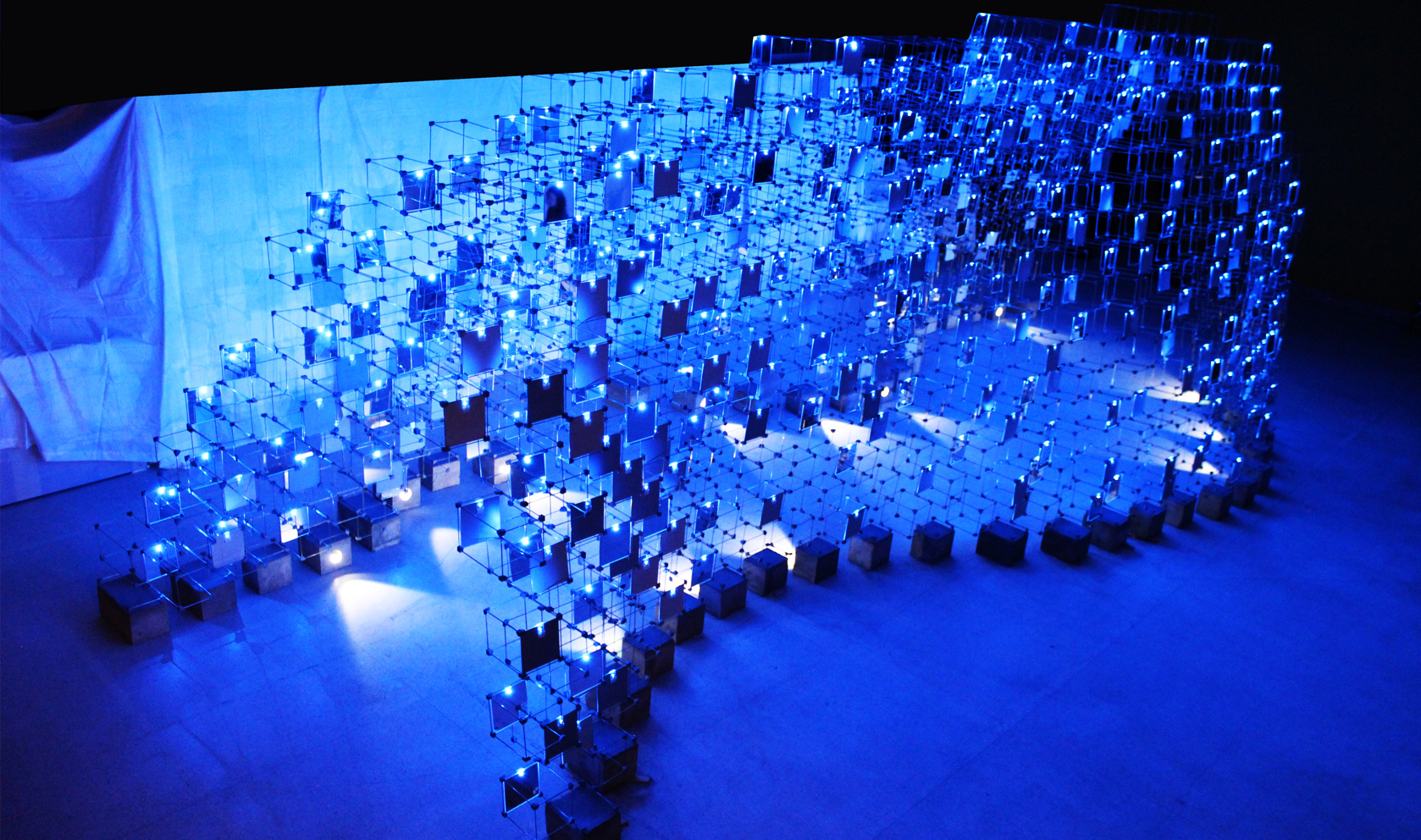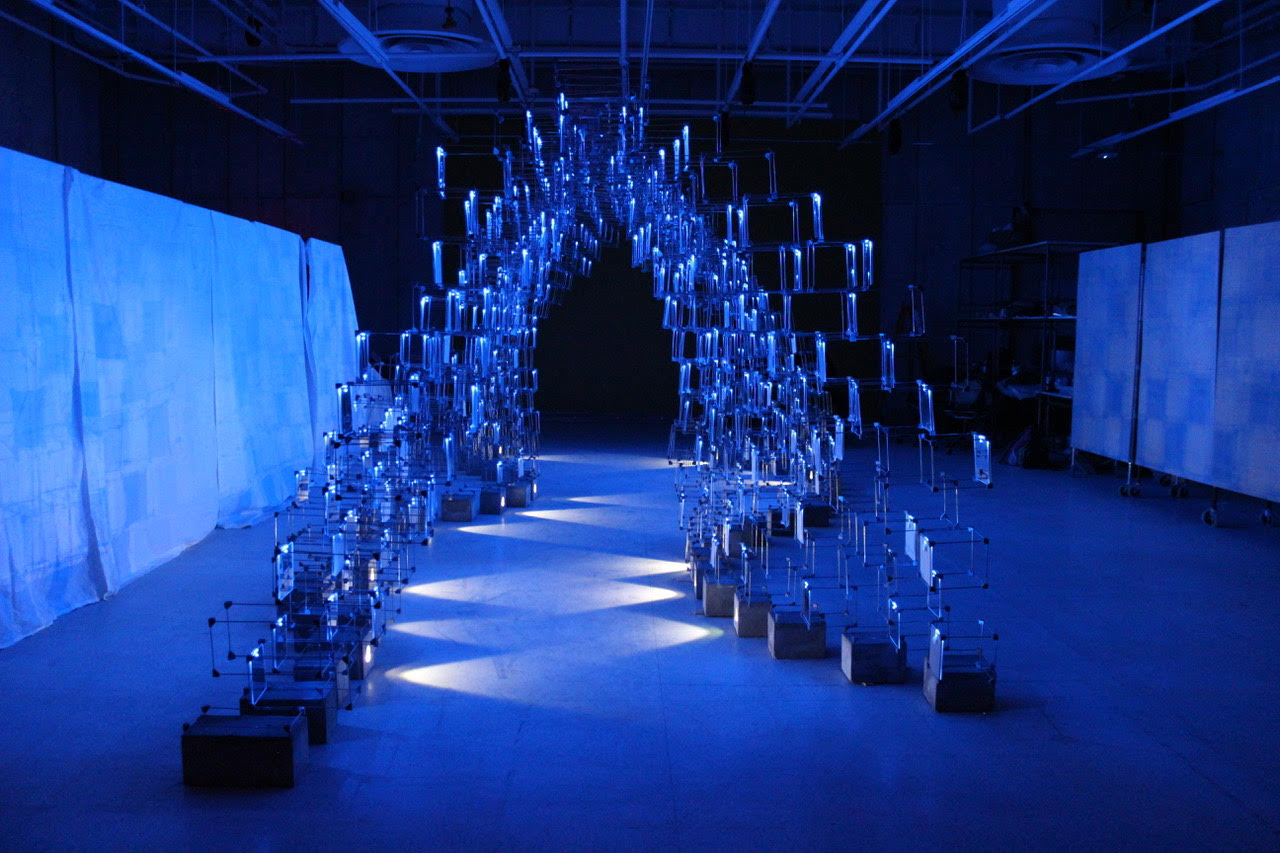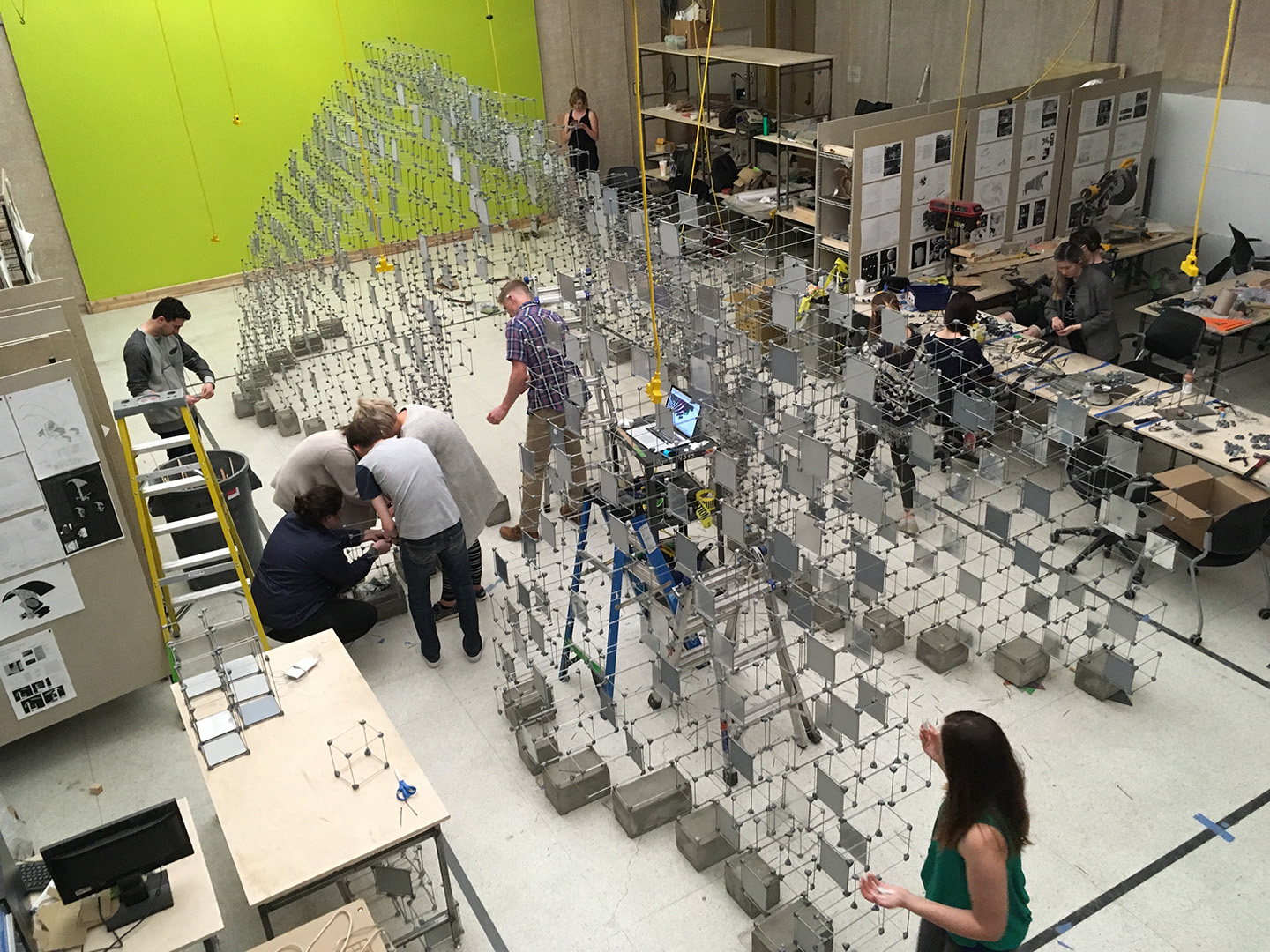ISU students design interactive pavilion for Flyover Fashion Fest in Iowa City May 5-6



05/04/17
AMES, Iowa — An interactive pavilion designed by Iowa State University students will provide new perspectives on self-image at the Flyover Fashion Fest May 5-6 in Iowa City.
Titled “IMRU” (I am are you), the pavilion will be located in Blackhawk Mini Park, 201 E. Washington St., on the Pedestrian Mall in downtown Iowa City. The 12-foot-by-30-foot serpentine structure, which features 450 small mirrors, is intended to create a “runway-like space” in which visitors see themselves reflected as “pixelated” fragments.
“When you look at the mirrors you can never see your entire self; you see pieces of yourself in the context of your surroundings,” said interior design senior Cassie Cook, Maquoketa.
“Think of breaking yourself down into these components, examining and learning to become comfortable with every part of you. The pavilion poses the question of ‘what do you see when you look in the mirror?’ and you fill in the blank, such as ‘I am living my truth; are you?’” she said.
Cook and her classmates developed the pavilion this spring in the Fabricating Potentials option studio taught by Assistant Professor Shelby Doyle, Daniel J. Huberty Faculty Fellow in Architecture.
Doyle first offered the interdisciplinary course in 2016 so students could learn to use computational design and digital fabrication to produce a small, temporary structure “to engage and interact with the public and make a meaningful impact on the community.”
She was approached by Simeon Talley, co-founder of the Iowa Fashion Project and Flyover Fashion Fest, after he saw the “Flux Pavilion” last year’s studio created for the 80/35 Music Festival in Des Moines.
Also in its second year, the Flyover Fashion Fest “provides a platform for local talent and contemporary art,” Talley said. “Fashion is often seen as elite, but we wanted to create an open environment that is thoughtful and accepting and serves as a coming together for the entire community.”
Talley saw an opportunity to make this year’s festival “more interactive and engaging” with the “added creative element” of a pavilion, he said. “I view it as a critical component of the artistic environment we’re trying to create.”
Interdisciplinary collaboration
Students began the project by researching contemporary pavilions, fashion trends and “the ways in which fashion has been exploring fabrication capabilities,” Doyle said. She asked them to consider lightweight materials that could be easily transported, assembled and later recycled. And to “blur authorship” of the pavilion, she had students develop their concepts in many small and larger groups to produce dozens of iterations before settling on the final design.
“The hardest part is determing how you respect and incorporate multiple ideas in an interdisciplinary studio where people are coming with different skills and different design language, and turning this into an asset instead of a point of conflict,” she said. “Getting all these smart and driven people to a common end goal is really challenging.”
The class rose to the challenge, discovering what each of the three majors — architecture, landscape architecture and interior design — could contribute and how to collaborate effectively.
“We had really interesting conversations about what a festival or a pavilion meant, before talking about materials and structure. Everyone had different perspectives,” said Erin Hunt, a senior in architecture from Dubuque.
“We started off looking at fabric as a primary material but moved away from that because we felt we weren’t paying respect to the fashion industry; there is so much more to it than just cloth and textiles,” said Jenna Strasser, an interior design senior from Chicago. “The goal was also to have the project speak to a wider audience beyond fashion.”
Knowing that activists promoting a positive body image and self-acceptance would attend the festival, the students wanted to convey that “as graduating seniors who are about to enter the real world, we have to accept ourselves” and made this their core concept, Cook said.
Reflection and movement
The final structure consists of just over a thousand 6”x6” boxes made of eighth-inch galvanized steel wire fit together with more than 4,000 3D-printed plastic joints. The 450 Plexiglas mirrors are placed randomly in slots in the wire frames; the curving walls are supported by 56 concrete blocks to anchor the pavilion on site. The structure will be illuminated at night with LED lights attached to the mirrors and support blocks.
“The 6”x6” size of the modules is the most structurally stable and the largest we could go without getting a lot of bend in the wire,” Hunt said. “We derived a Grasshopper (computer software) script that helped us better calculate the form and created a 3D visualization. We could then project the square modules onto the digital model to diagram the circulation around and through the structure and understand the context.”
After assembling and testing the pavilion on the Iowa State campus in April, the students have dismantled the structure for transport to Iowa City and will reassemble it on the Ped Mall Friday morning, May 5.
“It’s very porous and reflective, and it has a very different appearance during the day versus at night with the lights,” Hunt said. “It has a movement to it that’s kind of magical. I can’t wait to see it set up and how people react to it.”
Looking ahead
After the festival in Iowa City, nearly all of the materials in the pavilion will be recycled. The LED lighting will be returned to the ISU Computation and Construction Lab (CCL) for use in future projects. The galvanized wire will be returned to the manufacturer for resale and the plastic joints will be ground down and respooled for use in new 3D printing projects.
Doyle, who was hired under the ISU President’s High Impact Hires Initiative to combine digital fabrication and design/build at Iowa State and co-founded the CCL with colleagues in the architecture department, hopes the success of the Flux Pavilion and IMRU provides a springboard to future projects with new partners and communities.
“As an instructor it’s exciting to see what design students can do when they have access to digital fabrication equipment and are pushing these tools to see what can be built with them,” she said.
“I’ve only been at ISU for a year and a half, and I’ve been astounded by the support for speculative and experimental design work from our sponsors and community partners, such as the Flyover Fashion Fest. As we continue to build the ISU CCL our goal is to transition from small, temporary projects into larger and more permanent structures in Iowa.”
The students created three Snapchat geofilters that can be used to share experiences at the Iowa City festival. The project can be followed on Instagram using @isudesignbuild and the hashtag #IM_RU.
The spring 2017 Fabricating Potentials studio was supported by the Stan G. Thurston Professorship in Design Build, the Department of Architecture and the Flyover Fashion Fest.
Contacts
Simeon Talley, Flyover Fashion Fest, (202) 657-9102, simeontalley@gmail.com
Shelby Doyle, Architecture, (540) 454-4390, doyle@iastate.edu, shelby.doyle@gmail.com
Cassie Cook, Interior Design senior, cecook@iastate.edu
Erin Hunt, Architecture senior, elhunt@iastate.edu
Jenna Strasser, Interior Design senior, jstrass@iastate.edu
Paige Adams, Design Communications, psadams@iastate.edu
Heather Sauer, Design Communications, (515) 294-9289, hsauer@iastate.edu
-30-
